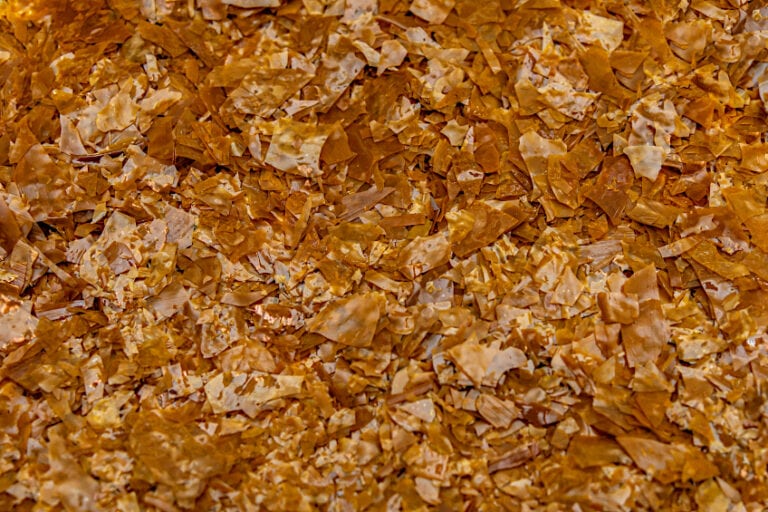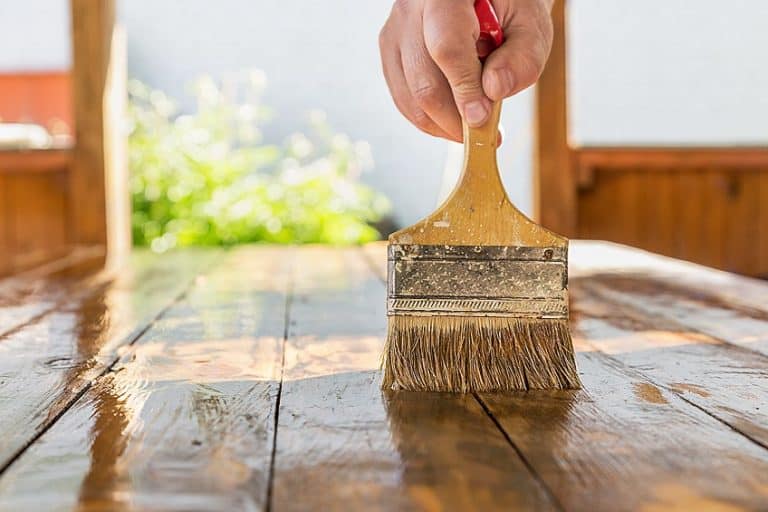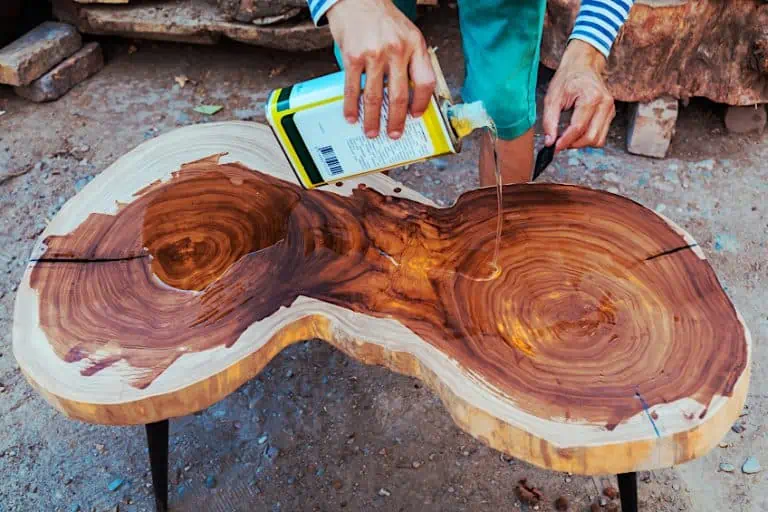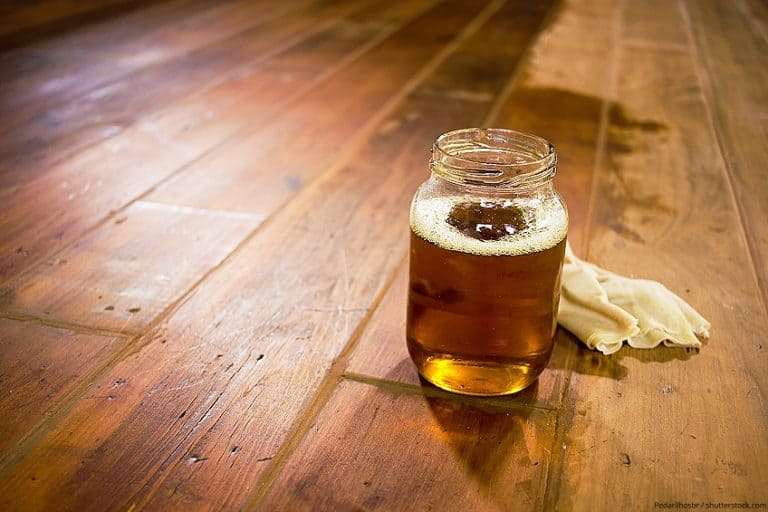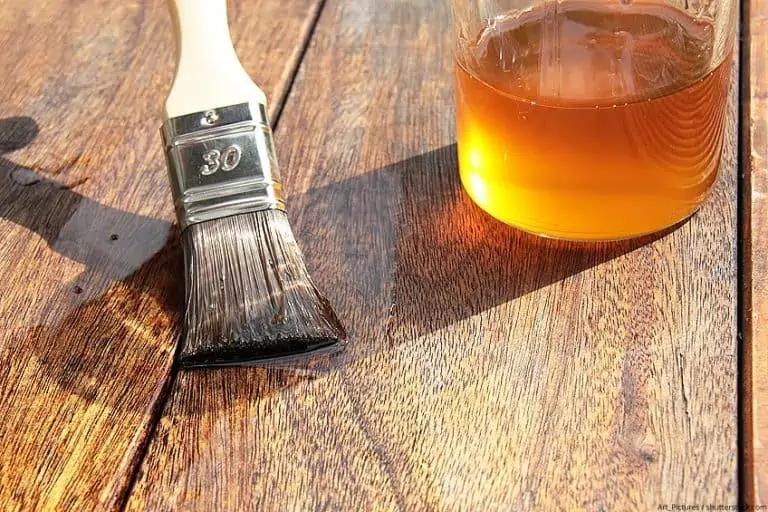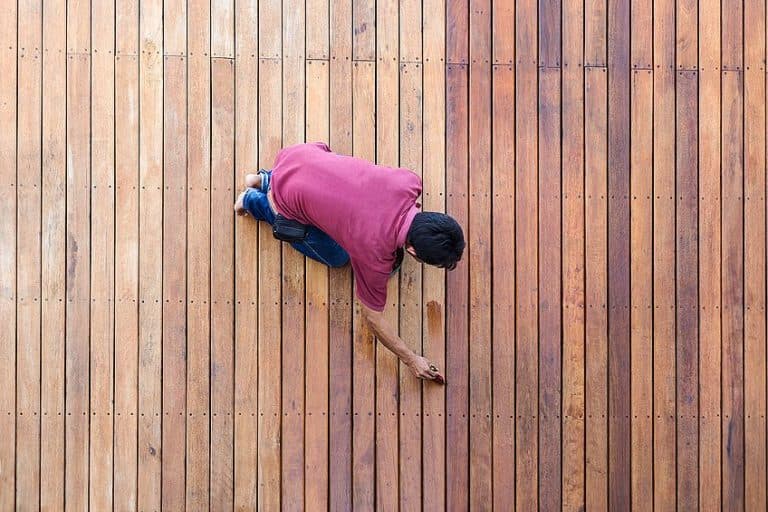How to Finish a Wood Kitchen Table – Tips and Tricks
You would expect to pay the most attention to detail when it comes to the table that you use daily. On your eating table, you can expect food spills, water stains, and the constant need to keep your table clean by wiping it. An important criterion when buying polyurethane for your table finish is that it is a long-lasting formula. You need your polyurethane to last long. A reason why you would decide to purchase a tabletop finish in the first place is to increase the life span of your table. We think the best finish for kitchen tables make the tables look far more attractive too. In that way, you need to know what the best finish for a kitchen table would be and these guidelines may help you pick a perfect finish that caters to your needs.
A Glance at Tabletop Finishes
If you are new to the finishes department at your local hardware store, it is advisable to start your polyurethane trial with an oil-based wipe-on type of polyurethane. This polyurethane has a quick-drying formula that is relatively simple to apply. A water-based wipe-on polyurethane can work too, but it results in a glass-like finish. If you would like that type of finish, you may choose to settle for the water-based polyurethane instead.
Shellac is not a good choice due to its non-durable nature, thus stopping it from being the best kitchen finish for wooden tables. Tung oil is also not ideal because of its slow-drying properties. With tung oil, you may have to apply coats over and over again until you achieve your desired results.
Again, when you are new to the polyurethane aisle, remember to ask for guidance from the store experts. Experts will give you good suggestions on the best kitchen table finish. There are many of the best polyurethane for kitchen tables – you just need to find the best wooden tabletop finish for you.
Handy Help for a Classy Finish
To ensure that you achieve the most attractive possible finish for your wooden table, we have compiled some helpful tips and ideas to guide you through the process.
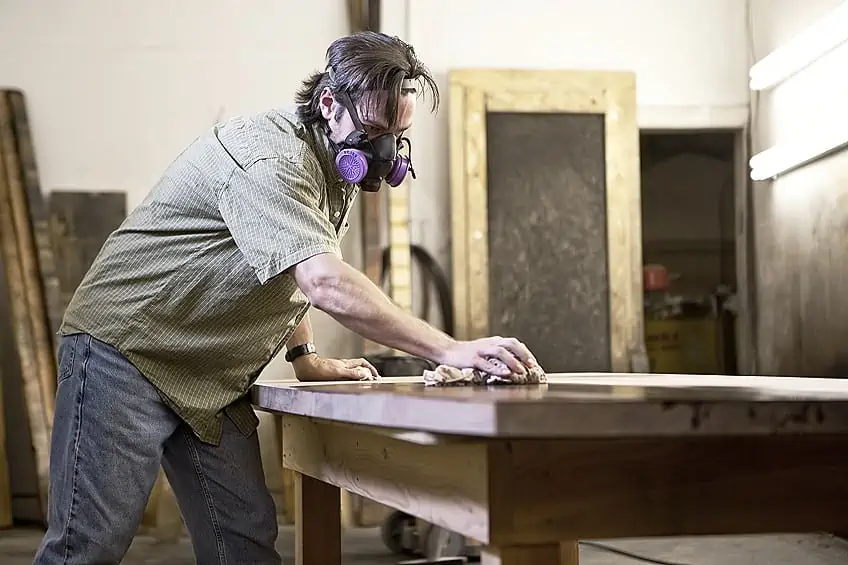
Sanding Ideas
- Use your hand to sand. Try to sand by hand using a grit disc. Sanding by hand is the preferred option as it will produce better results than sanding with an orbital sander.
- There is a technique to sanding. Begin by sanding every part of the surface in the same direction using the same sized grit disc. If you start sanding with a bigger grit size, the treated areas will look different to the areas that were sanded with a smaller grit disc.
- Sand enough but not too much. Try not to get carried away with the sanding process. Experts will advise you to stop at 150-grit for harder-grain wood, 180-grit for fine wood, and end grain to show far more drastic effects. For end grain, you may need to sand at 220-grit or more
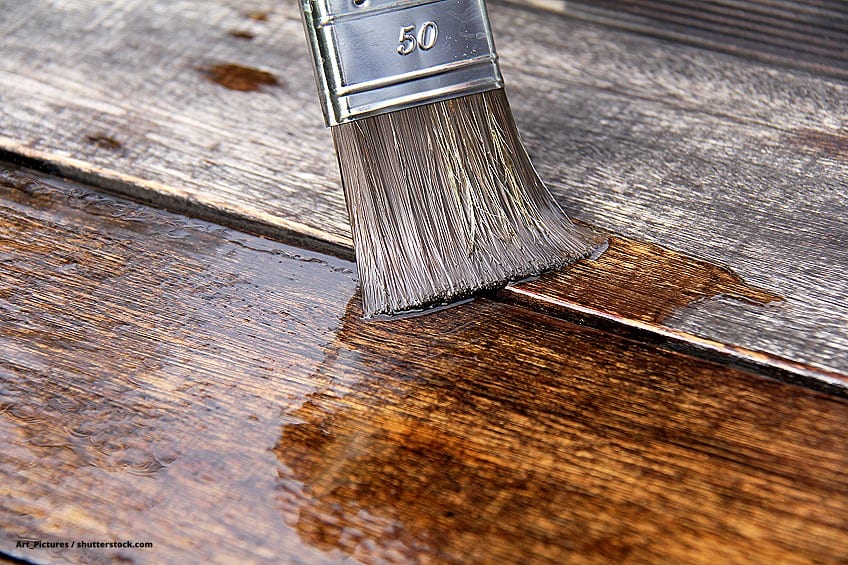
Application Ideas
- Work with ease and speed. While you should never be too hasty during the buying of finishes, you must speed up the application process. When working with water-based polyurethane, the drying time is sudden. An oil-based substance becomes honey-like in texture if left too long in its container. Thus, you should ensure that all of your curing equipment is by your side. Remember, you cannot stop for any reason once you have started the application of the polyurethane.
- Choose a roll-on finish type. Since speed and efficiency is needed to coat, perhaps you should settle for a roll-on oil-based polyurethane. It is easier to smoothly roll on the substance in comparison to trying to coat it on with a brush. It does yield a pleasurable finish. The instant after you apply the roll-on polyurethane, the bubbles that appear may look unattractive. However, once the bubbles vanish, the finish is smooth and aesthetically pleasing. The trick is to apply light coats to prevent bumps from forming. Water-based polyurethane is also not a suggestion.
- Coat the entire table. When working with the best wood finishes, you must keep your goal in mind at all times. The idea of using polyurethane is to protect your table from absorbing too much moisture, which means that you need to coat underneath the table as well. Just a coat on the underside will protect the table and not deem your coating exercise fruitless.
- Apply a minimum of three coats. You should select a durable product option but nevertheless, three coats work like a charm. If you want to add layers to better protect your wooden table, you can even decide upon four or five layers.
- The end grain effect. When using finishes on the end grain of your table, there may be a considerable color change in comparison to working with the face grain. A test must be done initially, and if the end grain looks horrific once coated, treat the end grain first. The end grain can be treated with droplets of finish to reduce absorption.
- White residue must go. Once the finish has dried after the wet sanding process, white marks may form. The idea is not to let white residue settle onto your wooden surface. If the white is left on the grain, it will create an unpleasant look on the table.
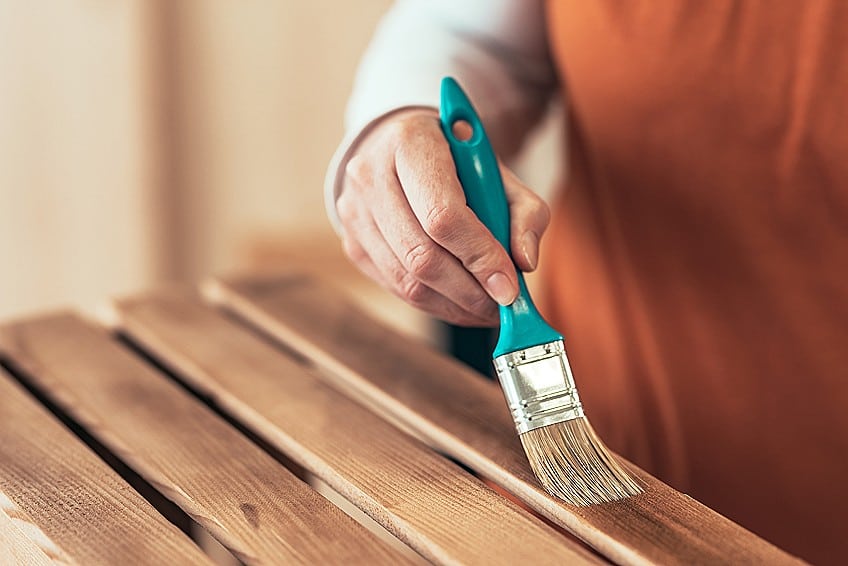
Which Finish to Choose for your Wood Kitchen Table
If it is your first time attempting to get the best finish for a wooden kitchen table, remember that you need to tread carefully during the entire process. Be patient. Ensure you choose to work with the best possible products from the get-go. Below is a guide on what to look out for when trying to find the best polyurethane for kitchen tables.
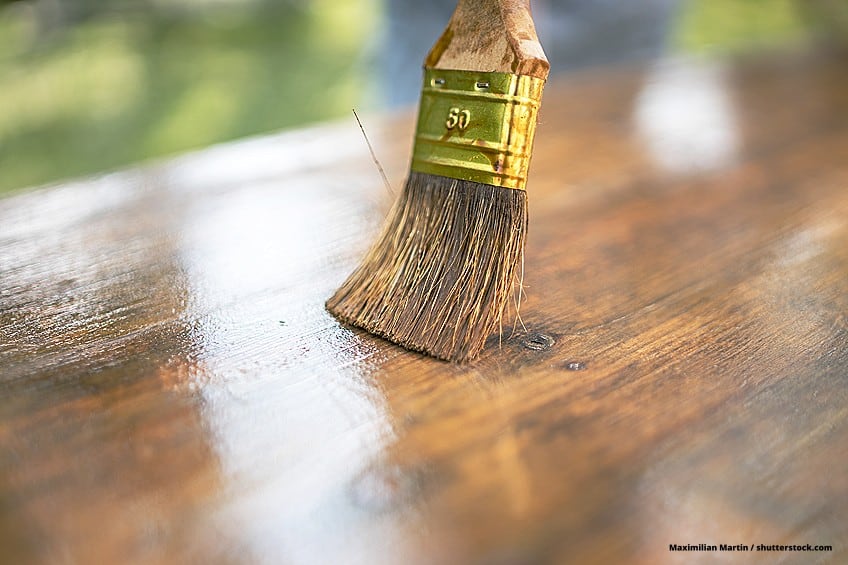
Application Requirements
While Minwax is easy to apply, it is still advisable for polyurethane to be used strictly by professionals. Therefore, when choosing a polyurethane for your first curing attempt, make sure you find one that is easy for you to apply. Many experts tell beginners to go for wipe-on polyurethane mixtures, as the chances of going wrong with this type of polyurethane are very slim.
Wood Finish Types
When searching for the best finish for kitchen tables there are various types of finishes that you can consider:
Water-Based Finishes
Water-based finishes are known as the best polyurethane for tabletops because of the fact that the substance is fairly thin and requires a shorter drying time. It is a time-saving option, especially for beginners who will lose their patience waiting for the finished design.
Water-based polyurethane works best if you want to ensure minimal odor from the finish that you apply. That’s because water-based products have a slight smell during the application process which disappears after drying. It is because of water-based polyurethane being thinner than other substances that causes it to be a quick-drying solution. So, if you are an individual that is looking for a time-saving finishing process, you will be doing the right thing by purchasing a water-based finish.
Oil-Based Finishes
You would choose an oil-based substance for a warmer tabletop finish. These finishes offer the best results in terms of quality and therefore can be used as a kitchen table finish.
The oil-based finish protects the wood. It is of the best quality, which makes it perfect to be used in the kitchen. The oil-based finish is one of the best tabletop finishes and is recommended by experts.
The Varnish Option
Your first instinct as a novice would be to use varnish. Varnishes are an amalgamation of oil, resin, and other substances. It is best to apply varnish on outdoor surfaces due to varnish’s durable nature. Varnish ensures protection against the sun’s rays. It takes a long time to dry fully, however, so this must be considered before using this particular product.
The Shellac Option
It is important to note that shellac is relatively easy to apply but is not preferred on tabletops due to the fact that it does not last long on surfaces. Shellac is assumed to be one of the best substances for tabletops as it is made from wax and other products, but this is a misconception. It is advisable to keep shellac away from wooden table tops.
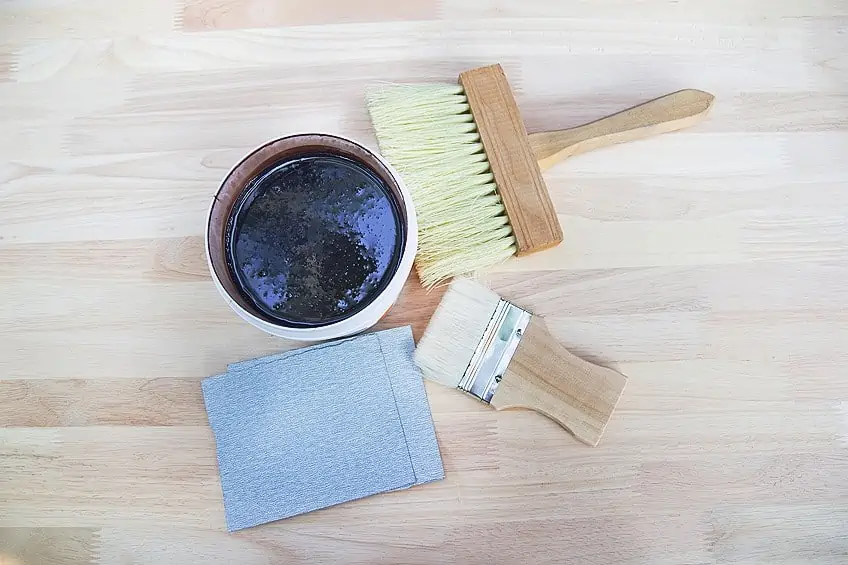
Usage Consideration
It is not required that you start with substances that are too complex to use. You should rather opt for a substance that is easier to use to avoid messing up the tabletop entirely. Try to consider options that have been recommended for novices to avoid going wrong.
Odor
It may not be on the top of your consideration list, but you should buy a product that will not produce an unpleasant smell. It is unbearable to work with a product that has a very strong smell.
Product Longevity
Be sure to choose a product that will last a long time. It may cost slightly more to buy a quality product, but it is always better to pay more and spend less in the long run. The more wear and tear a table goes through, the better off you will be with a durable table finish.
Varnish as well as oil-based polyurethane generally lasts longer on tabletops. If a longer-lasting option is what you seek, perhaps try linseed and Tung oil-based finishes. Shellac is not the best type of finish because it is a non-durable option.
Working Area
Many of these wood finishes are not free from odor. The area designated for working must always be well-aired with cross-ventilation so that you can handle the strong smells. Buy low-odor products if you cannot guarantee proper cross-ventilation.
Costing
Always keep the costing of products in mind. While some finishes may be worth the hefty price tags, many may not be. Always seek guidance about products and whether the quality is ensured by higher-priced products.
Frequently Asked Questions
When Working on Wooden Surfaces, Which Clear Coat Will Last the Longest?
The very formulation of varnish makes it a thicker substance that lasts longer, dubbing it desirable for use on wooden surfaces and in the outdoors.
Should One Choose Water-Based or Oil-Based Polyurethane?
When making this decision, there are a variety of factors to consider. The oil-based finish results in a finish that is not as clear as that of the water-based option. Therefore, if a crystal-clear finish is on your agenda, definitely go for a water-based option. It is worth noting, however, that the oil-based polyurethane is easier to roll on and apply.
Why Should Applying Kitchen Wooden Table Finish Be a Requirement?
Since you want to keep kitchen wooden tables looking great for a long time, you must set out to achieve the best finish for tabletops. A table which has no finish tends to look less pleasing. Uncoated surfaces are also far less durable than well-coated ones.
Is It Possible to Apply Polyurethane to a Painted Surface?
Certainly, it is possible to apply polyurethane to painted surfaces provided that you prepare your surface for the finish.
How Do I Seal the Wooden Surface?
When using a sealer, it seeps into the wood as a means of protection. Sealer application is simple, especially when it comes to sealing timber. Enlisted below are the steps:
Step 1: Work on a clean surface. The dirt on the table will cause complications when it comes to the adhesion of the formula.
Step 2: Start by working with a paintbrush to apply the sealer. The paintbrush will ensure that you make the perfect strokes while showing no streaks at all.
Step 3: Get the sealer to dry fully before you apply or reapply layers. One layer of sealer will do the trick. No additional layers of sealer need be applied.
If There Is a Varnished Wooden Table, Can It Be Painted?
Just as you can varnish over a painted surface, you can paint over a varnished surface. In fact, painting renews older looking wooden surfaces and may result in the best finish for your dining table.
A suggestion: The thick and clear formulation of varnish ensures a shiny surface that is well-protected. The varnish may create an entirely new look for your table. So if that is the kitchen table finish you seek, use varnish!

I have been into woodworking since 2005 and woodturning since 2011. Because of my love for wood and woodworking, I started woodhappen.com to teach other enthusiasts about how to finish and seal wood, the best woodworking tools, the different types of wood, and everything else related to woodworking! Read more about me here.


